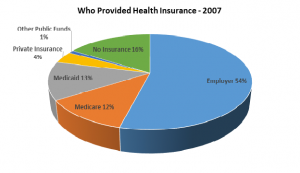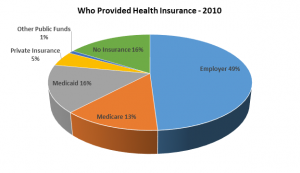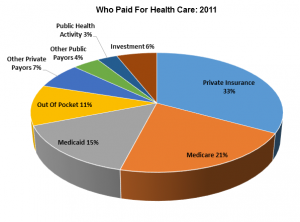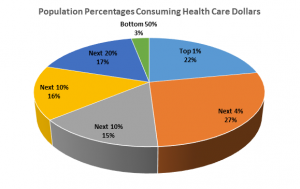Last week the Congressional Budget Office released “The Budget and Economic Outlook: 2014-2024.” Conservatives and the right-wing media got an instant woody over Appendix C – Labor Market Effects of the Affordable Care Act: Updated Estimates. The ACA would kill 2.5 million jobs, take away the incentive to work and put millions more on the dole.
The White House, predictably, embraced the report as a victory of sorts for the beleaguered American wage slaves who have been worried they will die chained to their desks. Meanwhile, Politico accuses both sides of “cherry-picking” the data in the report.
So what to make of all this? Here’s my take.
First, CBO’s projections are educated guesses about the future based on current data and realities that are likely to change, requiring further analysis and adjustments. Indeed, the CBO admitted:
“…estimate(s) of the ACA’s impact on labor markets (are) subject to substantial uncertainty, which arises in part because many of the ACA’s provisions have never been implemented on such a broad scale and in part because available estimates of many key responses vary considerably. CBO seeks to provide estimates that lie in the middle of the distribution of potential outcomes, but the actual effects could differ notably from those estimates…”
The claim that there will be 2.5 million fewer jobs by 2024 can be blamed on conservative animosity towards the ACA, aided by the CBO’s authors’ poor choice of words. The report forecast workers voluntarily reducing their labor by 2.5 million full-time equivalent hours. That will likely happen mostly among low wage workers, amounting to 1.5 percent to 2.0 percent of total hours worked.
“…The estimated reduction stems almost entirely from a net decline in the amount of labor that workers choose to supply, rather than from a net drop in businesses’ demand for labor, so it will appear almost entirely as a reduction in labor force participation and in hours worked relative to what would have occurred otherwise rather than as an increase in unemployment (that is, more workers seeking but not finding jobs) or underemployment (such as part-time workers who would prefer to work more hours per week)…”
Those workers are NOT quitting altogether to go on the dole. Some may go to part-time jobs; others may retire early. There are 10,000 Baby Boomers retiring every day through 2031; their exit from the workplace could potentially create job openings for younger, qualified currently unemployed workers.
However, any potential job changes come with trade-offs.
Full-time employees whose income is more than 400% of the Federal Poverty Level (FPL) or whose employers offer health insurance are not eligible for subsidies for health insurance purchased through the exchanges. So they will either continue to work full-time, switch to a different full-time job, or go to part-time jobs and purchase their own insurance, especially if the net result is working fewer hours while maintaining their desired standard of living.
Employees whose income is less than 400% FLP or whose employer does not offer insurance can obtain insurance through the exchange, and they are eligible for tax credits and subsidies, which decrease as income increases. They might work less to avoid crossing the FLP threshold which means losing their subsidies and credits while effectively hiking their taxes. But then again, they might decide the extra income is worth the tax bite
People living in states that agreed to expand Medicaid are now eligible for Medicaid benefits if their income is less than 138% FLP. If they earn more, they’ll be eligible for insurance subsidies, ensuring they won’t lose coverage. People living in states that did not expand Medicaid, however, can only get insurance subsidies, not Medicaid.
I think the real issue is: conservatives and their corporate overlords hate losing the leverage that health insurance once gave them over workers. How many people have endured “job lock,” staying in a thankless job, working more hours for less pay, working for condescending employers who’ve made it abundantly clear employees are unimportant, easily replaced, but a necessary evil? Have you ever been told, “Bend over and like it because there are ten other people out there waiting for your job?”
Employers might be a little more considerate now that health insurance isn’t always tied to the job. I’m not holding my breath.








